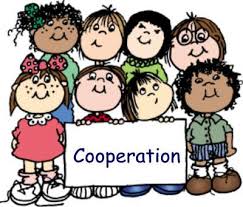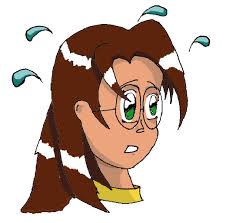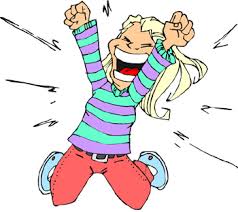Reflective Practice forces us to question what it is we know and how we come to know it. It makes us reflect on our strengths, weaknesses and where we can improve.
Growing up in the world of dance, the phrase “practice makes perfect” was commonly used. This idea that by repeating a movement over and over you will improve is not necessarily the case. Firstly you need feedback from your teacher about how to improve. Repetition may perfect what you already know or keep us doing it in the same way, but unless we act on our reflections then no development will take place. Dancing as a child often what happened in class would be left at the door on the way out. My mum would drop me off, I would take class and then pretty much leave what happened at the door on the way out. John Dewey (1930) saw the value of reflection as means of learning. He believed that learners need to be involved in doing but then in thinking about what comes from the doing so that learning can start.
I first came across using reflective practice as a tool to learning at Elmhurst School for Dance. Here we were asked to keep a journal noting constructive criticism, how we might improve, what went well and not so well. Writing these thoughts down made us take time out to reflect on how the class had gone so the next time we would know what we needed to work on. Thinking before you do a movement helps to achieve it properly. For example before attempting a double pirouette there are a number of thoughts running through my brain: use of plie, weight placement, hold arms, whip of the head etc. Without thinking through the mechanics I would be unable to pull off a clean double pirouette. Now at school I tended to wait for the teacher to give me a correction, I could then record this and work on improving it.
In my professional practice however, it is up to me to establish what isn’t working and how I can improve. The 5 years of professional dance experience I have had will not lead to learning more unless I can reflect on that experience. Reflection leads to deeper meaning and reflective practitioners have been described as those who;
‘understand how to think and learn from their experiences in practice and to apply and monitor the outcomes of that learning’ (Moon 1999:42).
I think my reflective journal is going to aid me in my career by thinking deeper about how I can learn from the experiences I have had and the ones to come. Moon also talks about journal writing as enhancing “self empowerment”, which when confidence may be lacking can help us. As dancers we often face many rejections as part of the job. Writing our thoughts down can help us to work our way through these feelings channeling our emotions in a positive way.
But writing is not the only way of reflection. I have started to experiment with poems as suggested by Adesola Akinleye and sketches as suggested by Paula Nottingham as a way to reflect on experiences, which I find clarifies what I really found important on that particular day.
David Kolb (born 1939) was an American theorist who in 170 along with Rodger Fry developed an Experiential Learning cycle based on the idea that learning is a series of experiences.
`Learning is the process whereby knowledge is created through the transformation of experience.' (Kolb 1984:38)
At first I was a bit skeptical of this way of learning not seeing where I came in and not sure if I agreed with categorizing learning into four stages. The problem I initially found was that firstly you must identify you have an experience in order to learn from it, often a number of stages occur at the same time and sometimes stages can be jumped or missed out completely. I also thought that this cycle is more aimed towards a scientific learning process not artistic. As artists we learn from an inside out point of view whereas educators are from the outside in. We learn from showing whereas education is telling. I therefore developed what I felt my own learning cycle might look like from a dance/performing perspective.
Laura Weir's Learning Cycle In Dance:
DEMONSTRATION
(watch the choregrapher)
PERFORMANCE DANCE
(It's show time!) (repeat the movements)
CRITIQUE
(listen to corrections, make changes)
In my previous blog ‘Thoughts so far on Reflective Theory’ I researched Kolb’s cycle further by looking into the four learning styles (Divergers, Assimilators, Convergers and Accommodators). I found myself to be a Diverger (in between concrete experience and reflective observation) as I learn from watching rather than doing. I tried to see where I would fit into Kolb’s cycle on my everyday promotional work. An extract taken from my journal on Fri 29th October 2010:
“we were shown by another demonstrator how the toys worked (reflective observation), then were asked to try them out ourselves (active experimentation), we were given tips and techniques and other things to try out (abstract conceptualization) and then later that day I was on the shop floor doing it in front of people (concrete experience)”
(Laura Weir, 2010)
It reconfirmed that I like to observe before doing just like when I created my blog and looked at what other people had done before creating my own. Even though I can see how I could be a diverger because I like to observe before doing, I don’t agree with the description as much as I do that I am a kinesthetic learner.
Donald Schon’s (1983, 1987) theory of reflection-in-action is something I realize I use very often when performing onstage. Having a quick response when something unexpected happens is vital to being a professional dancer. Robert Kottcamp belived reflection-in-action is much harder than on-action but this is mostly down to his profession as a writer where it is important to think and look back on what he has written. As dancer, reflecting-in-action is a vital part of performing. An perfect example of reflection-in-action was when I dancing onboard the Queen Mary 2. We were in the middle of dancing Abba with 6 couples all on stage at the same time. One of the guys at the front went into a lunge to catch his partner and split his white pants all the way down the back! He whispered to his partner what had happened and they cleverly exited off stage. Suddenly I realized being the center couple that the formation looked off so we started to re-block whilst dancing. I and my partner edged over to the right making the couple next to us move forward which created a 5 couple formation. It was truly amazing to see the cast in the space of a few seconds come together to change the pattern. Not only that we had to constantly think all the way through the rest of the number of our spacing as a group so nothing looked wrong all whilst dancing and without speaking a word to each other. This type of reflecting- in-action is what Schon calls the ‘action-present’ which is a response to a surprise. Reflection-in-action challenges us to think in a new way about the problems we have encountered.
I have reflected-on- action many times training at Elmhurst (such as completing self-assessments) and in my professional practice when asked to view videos of performances we have done. Shows were always recorded on the ship for the dance captain to view and take notes on as well as for ourselves to view to scrutinize what we need to change or improve. This helped us to note what looked wrong and change it in the next show. But this technique may not be suitable for everyone. As dancers we are already self critical that it can make our self esteem even lower than it may be.
Howard Gardner’s (1983) multiple intelligences theory questioned the tradition of measuring intelligence by a simple IQ test. His idea of there being 7 different intelligences made me keen to want to find out more about the way I learn. In my previous blog ‘What learning style are you?’ I took an online test to find out my learning style. What I discovered was that I am a kinesthetic learner- learning through touching, feeling, and being hands-on. I found that the answers I was given I could really relate to.
‘The bodily kinesthetic learning styled student may be drawn to careers such as professional dancer’ (Understanding bodily kinesthetic learner, Ann Logson)
It made sense that this is my main learning style that I learn by doing things in an active way explaining why I can easily remember a dance move more than a talk given by someone. I think I liked this idea so much as it gave me an excuse to why I sometimes struggle memorizing certain information however if I see or feel something I can remember it vividly. In the Reflective Practices reader Adesola commented on how she thought she liked the idea of dancers being kinesthetic learners because she had always struggled with reading and writing so it made her feel better to think dancers are better at ‘doing’ things. Poor performance on a particular activity may be misinterpreted as lack of knowledge when actually it is difficulty in a particular learning style. What Adesola goes onto say is that it;
‘makes me realize that the idea ii like is not so much about the idea itself, “dancers learn ”, its more about my feelings about myself’
(Adesola Akinleye, 2010)
Actually she is not a kinesthetic learner, but used this to justify what she was not good at. I do think we have to be careful that acknowledging a particular learning style does not give us a tendency to behave in a certain manner. However recognizing our learning style can help us to become better learners with a more positive attitude towards study and greater confidence in applying ourselves. By identifying my learning style and researching it in more depth I found my weakness and strengths.
Conclusion
Reflective practice requires you to take time out to think and reflect. The aim is to find improvement and learn from practice then to inquire to find out more. It has been interesting to explore different theories on reflective practices and how I can use them in my own practice. I have found I can relate to the ideas of Moon, Schon, Gardner taking them forward and using them in the ways I reflect on my own professional practice.
But one question I would like to raise is what if we are unable to reflect on our actions? Does that mean we cannot improve? Reflection may not be the only way or the best way to develop professional practice. Surely each individual is different so it will vary in each person as to what is effective.
References:
Akinleye. A (2010) Reflective Practices Reader
Kolb, D. 1984 Experiential Learning: Experience as the Source of Learning and Development
Englewood Cliffs, NJ: Prentice Hall
Logsdon, A. Understanding Bodily Kineasthtic Learner, http://learningdisabilities.about.com/od/resourcesresearch/qt/Bodily_kinesthe.htm
Moon, J. (1999) Learning Journals. A Handbook for Academics, Students and Professional Development, Kogan Page Limited, London.
Schön D (1983) The reflective practitioner. Basic Books: New York




